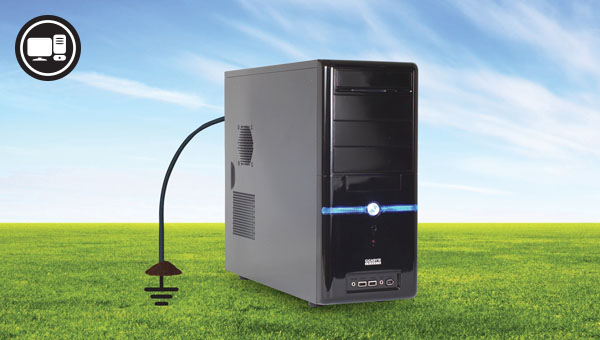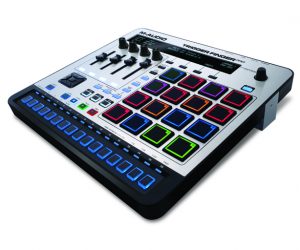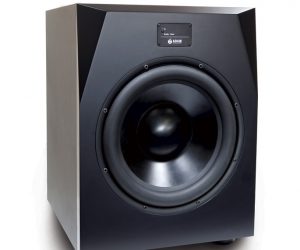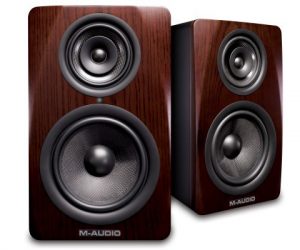
PC AUDIO 118

If your PC audio whistles in time with the music, or has itchy/scratchy background noises, ground it until it behaves properly.
Column: Martin Walker
During my regular forays during the last 20 years onto Internet forums intended for the PC musician, there’s one audio problem that has popped up with alarming regularity, never seems to get any easier to solve, and still results in lots of confusion and frustration. I refer to the humble ground loop, which since the onset of digital technology has moved on from infesting our audio with low-level background hums, to creating a raft of ticks, clicks, scratchy burbles, high-pitched whistles and various other digitised noises that often resemble covert conversations between various forms of robotic lifeforms. Some people simply assume the culprit is their audio interface and attempt to ignore such background noises, but the truth is that even the cheapest audio interfaces should nowadays be capable of very good audio quality with at most a tiny amount of background hiss from the circuitry.
LOOPING THE LOOP
So what causes the problem? Well, the simplest ground loop occurs when you have two gear items each separately grounded via their mains cable earth, and then you connect the two via a screened audio cable. For a musician, this typically happens when you attach your desktop PC to an external audio interface with its own power supply. Laptops/notebooks/notepads suffer the same issues if connected to their own earthed PSUs, but should be immune if run from battery power or via Class-2 double-insulated PSUs.
As soon as the ground loop is ‘completed’, current flows through these multiple paths to ground causing low-level signals to be heard in the audio path. The smaller the loop, the lower the current that flows, which is why you can often minimise such interference by making sure all your mains-powered gear is connected by distribution boards to a single mains socket. For example, I once connected a MIDI controller keyboard in my studio to a mains socket on the other side of the room from the one used by my PC, and experienced nasty audio glitches that were immediately cured by moving the keyboard PSU to my PC mains socket. Ground loop noises can also be surprisingly unpredictable. You may have a dozen gear items connected together in perfect sonic harmony, despite incorporating several ground loops, but then replacing your PC with a different model or adding one more gear item results in nasty noises that prove difficult to track down and eradicate.
GETTING GROUNDED
The ideal way to cure audio ground loop problems is of course to break all such loops, but without compromising electrical safety by removing any earth wires from the mains plugs themselves (if your gear ever develops a fault, you could electrocute yourself if you’ve removed its safety earth connection). Since it’s quite possible to end up with multiple ground loops that each affect the other, the only sensible way to silence these annoying background noises once and for all is to unplug all the audio cables in your PC setup, which should result in perfect silence from your audio interface output. The aforementioned tiny amount of background hiss is acceptable, but shouldn’t be audible at normal playback levels unless you press you ear right up to your loudspeakers. Listen to this background noise each time you plug in another audio cable into your setup, and if any ground loop noises reappear you need to break the loop you’ve just created.
If your audio interface/active monitors offer balanced I/O, using balanced XLR or TRS audio cables between them rather than unbalanced cables should help resolve most ground loop problems. However, some commercial XLR cables still have their pin 1 erroneously connected to the XLR shell, so snip this connection if you still get ground loop problems. This ‘pin 1 problem’ is a well known issue (more at www.rane.com/note151.html if you’re interested). One handy device to have in your tool box is a ‘hum eliminator’, incorporating an isolating transformer (you can buy super-cheap ones from car accessory outlets, or more professional-sounding versions such as the ART Pro Audio Cleanbox range). Your audio gets through almost perfectly, but the ‘galvanic isolation’ of the transformer connection ensures that no ground loop is created. Use hum eliminators to fault-find noise-causing cable connections, and then either cut the earth at the destination end of the offending audio cable, or leave a Cleanbox in place permanently (super-cheapy car hum eliminators tend to have tiny/grotty transformers with poor bass response and noticeable distortion at higher signal levels, although a few may like the resultant sonic changes). The most important thing is to be systematic and go slowly.
DIGITAL BITS & BOBS
Problems areas can arise when connecting some USB-connected synths and audio interfaces to your PC, because both your computer and USB device are earthed via their respective mains plugs, so the ground loop is, on this occasion, completed via the USB cable that connects the two. If unwanted noises only reappear when you plug the USB cable back in (or even touch the metal of its plug to the chassis of the other gear), you’ve confirmed the culprit. In the past it could be difficult to eradicate such problems, as ‘USB isolators’ tended to be rather upmarket items. However, you can now buy reasonably priced ones that work exactly like the ‘hum eliminator’, but for USB connections. Once you’ve confirmed it is indeed the USB connection that closes the loop, have a look on eBay for a modern in-line ‘USB Isolator’; it looks like a large USB plug with a USB socket at the far end. With USB audio interfaces you can also sometimes run into background noise problems if connecting them via some USB hubs, so try to keep your audio connections as simple as possible.
Finally, if audio gremlins appear that don’t respond to ground-loop tweaks, make sure that the problem isn’t simply due to interference emanating from a nearby wall-wart/line-lump PSU. Try rotating the offending article to see if this reduces the noise, and leave it in the ‘quietest’ position. However, wherever possible try to keep such boxes well away from audio cables, and if they must be close by, ensure their cables cross at right angles rather than running in parallel. It can also help to keep your mains and audio connections clean, as this will minimise any remaining ground currents. After powering down and unplugging, I give mine a wipe down with Caig DeOxit contact cleaner about once a year. If your PC is currently whistling at you, don’t put up with it!
















RESPONSES